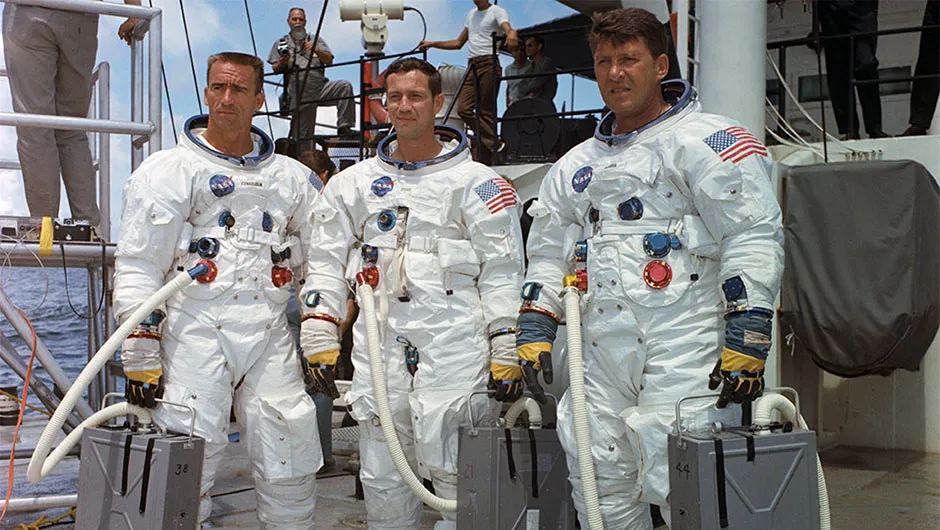When it came time for Neil Armstrong to step onto the lunar surface, though he had left the Lunar Module he was still inside a flexible spacecraft: the Apollo moonsuit.
Without it, space radiation would scorch his skin, sunlight would cause charring, the air in his lungs would whoosh out in a cloud of icy crystals, and his soft membranes would essentially turn inside out. It was just one of the many aspects of the Apollo missions that had been developed from the experiences of the Mercury Seven astronauts.
The moonsuit was a marvel of engineering, and critical to its protective abilities was the life support backpack, the Portable Life Support System, or PLSS for short.
Read more of Rod Pyle's Secrets of Apollo:
This clever machine contained oxygen for breathing and the maintenance of air pressure, carbon dioxide scrubbers to remove the deadly gas from the astronaut’s exhalations, a radio to communicate with Buzz Aldrin and with Earth, and a water supply for both drinking and controlling temperature.
It even mitigated body odour and humidity with filters. You don’t want your workplace to smell like a gym locker!
The Apollo 11 PLSS had a lifetime of four hours, and the EVA was limited to two-and-a-half hours for safety.
Temperature control alone was a massive task: the Sun-baked side of the suit could soar to 120°C and the shadow side dropped to about 65°C.

The one-gallon water supply was circulated through the astronaut’s undergarments through tiny plastic tubes woven throughout, and excess body heat was carried away by slowly venting the warmed water into the lunar vacuum.
The PLSS’s functions were controlled by a small chest pack with analog gauges indicating the remaining supplies and suit function.
Finally, atop the backpack rode another small box, the Oxygen Purge System, which carried another 30 minutes of oxygen, carbon dioxide filters and cooling water in case of an emergency.
The PLSS backpacks were the size of a suitcase - a tremendous innovation in an era when life support systems had previously ridden inside large spacecraft - and no PLSS ever failed in service.
This article originally appeared in the August 2019 issue of BBC Sky at Night Magazine.
Rod Pyleis the author of 15 space books and Editor-in-Chief ofAd Astramagazine for theNational Space Society.